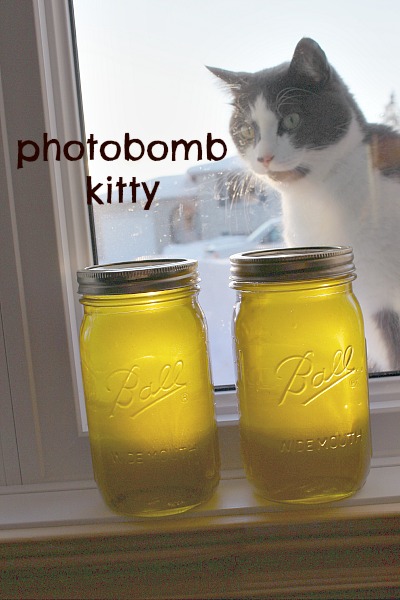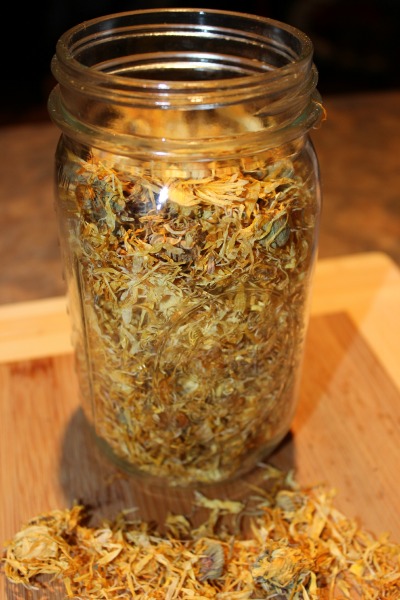
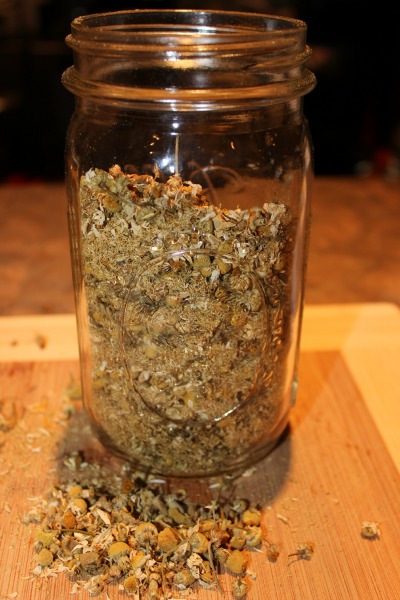
Calendula flower oil and chamomile infused oil can be used in baby soap, lotion bars or massage oils. Infused vegetable oils capture beneficial properties of the botanicals.
It is very easy to infuse oils with botanicals and a great way to reap the benefits of the natural properties of medicinal plants.
Oil infusion allows you to transfer different elements depending on what herb or spice you are using. You can capture gentle scents, natural color or skin soothing and calming effects. Staying healthy by using botanicals has been around forever and using them in your bath and body products can support a more natural lifestyle.
There are 2 methods for infusing oil: solar infusion and hot infusion.
Prepare jars
For both methods you will need clean glass jars. Consider using the dishwasher to sterilize the jars, you can also spray 70% ethanol to sanitize. I prefer to use new covers for my mason jars to make sure that there is no spoilage.
Prepare botanicals and oils
A little research can help you choose what botanical and oil you wish to use. We used dried herbs for our calendula flower oil and chamomile infusion. You might have some abundant bounty of herbs from your garden that you wish to dry out and use. There are courses that allow you to study botanicals.
The ratio of botanical versus vegetable oil varies from one author to the next. I think that it also depends on what you intend the oil for, the carrier oil as well as the length of time it will be infused.
Every oil has a different shelf life, most under a year such as almond, avocado, sunflower and grapeseed. The oil we recommend is olive oil because it is stable, depending on what you want to use it for, you can also use jojoba (expensive), castor oil and fractionated coconut oil. You can also use coconut oil if you are using the hot infusion method.
Solar infusion
Place the botanical in the glass jar. Cover with vegetable oil. Make sure that all the botanicals are covered to avoid rancidity and spoilage.
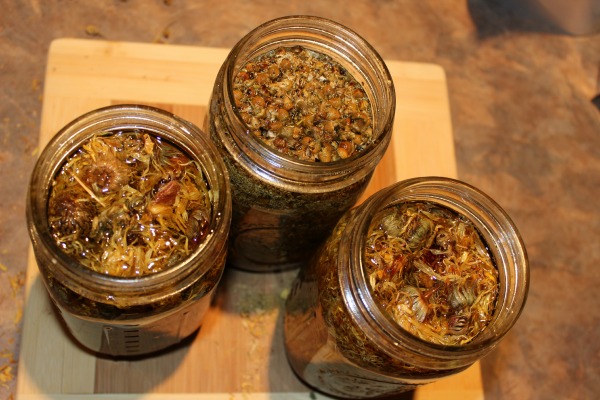
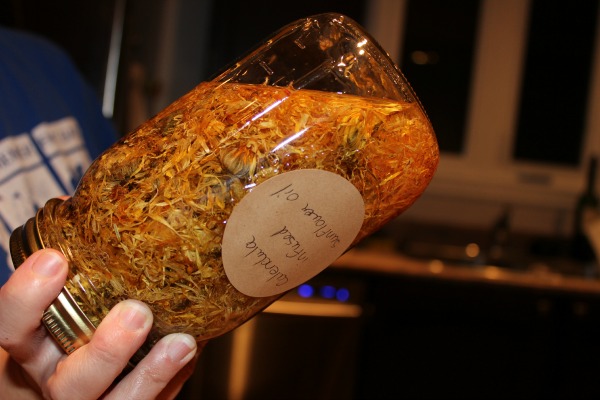
Give a good shake.
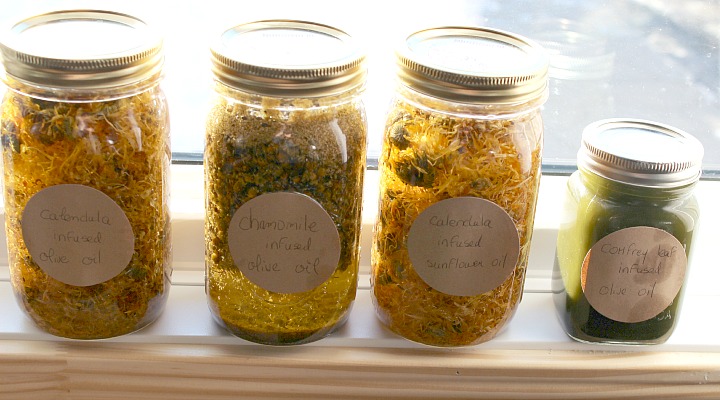
Place in a sunlight area and let infuse 3 to 6 weeks. You should give it a shake every day.
Strain botanical from oil using cheesecloth over a strainer, you can also use a nylon stocking.
Store your infused oil in a cool dark place. The oil should be good for about a year.
Hot infusion
There are a few ways of going about using this method. All require adding heat to the oil and botanicals.
Stove top: You can use the stove top by
- placing the herbs and the oils in a double-boiler. There should be enough oil to cover the botanicals.
- Cover and heat at a very low simmer for about 30 minutes (do not exceed 120 F).
- Let infused oil cool to room temperature. You can even let it sit for a full day.
- Strain botanical from oil using cheesecloth over a strainer.
- Place in clean glass jar.
Store your infused oil in a cool dark place. The oil should be good for about a year.
Crock pot: I used this method for my calendula flower oil and chamomile infusion.
- Place botanicals in crock pot and cover with oil.
- Set crock pot at lowest temperature and uncovered (temperature should not exceed 120 degrees).
- Let heat for 1 to 3 hours. Let infused oil cool at room temperature. You can even let it sit for a full day.
- Strain botanical from oil using cheesecloth over a strainer.
- Place in clean glass jar.
Store your infused oil in a cool dark place. The oil should be good for about a year.
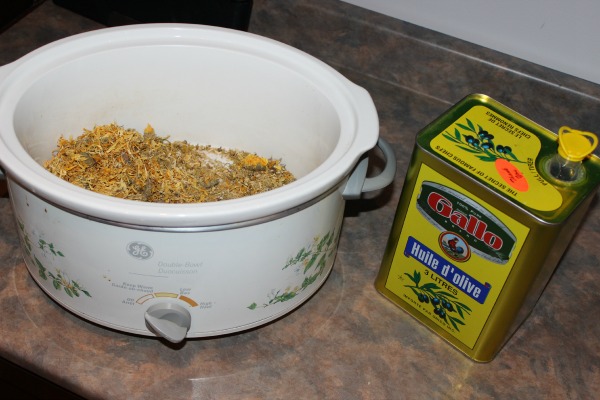
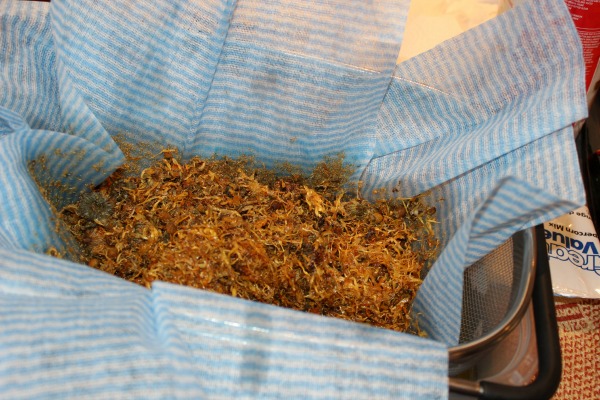
This calendula flower oil and chamomile oil was used to make some wonderful buttermilk castile baby soap.
